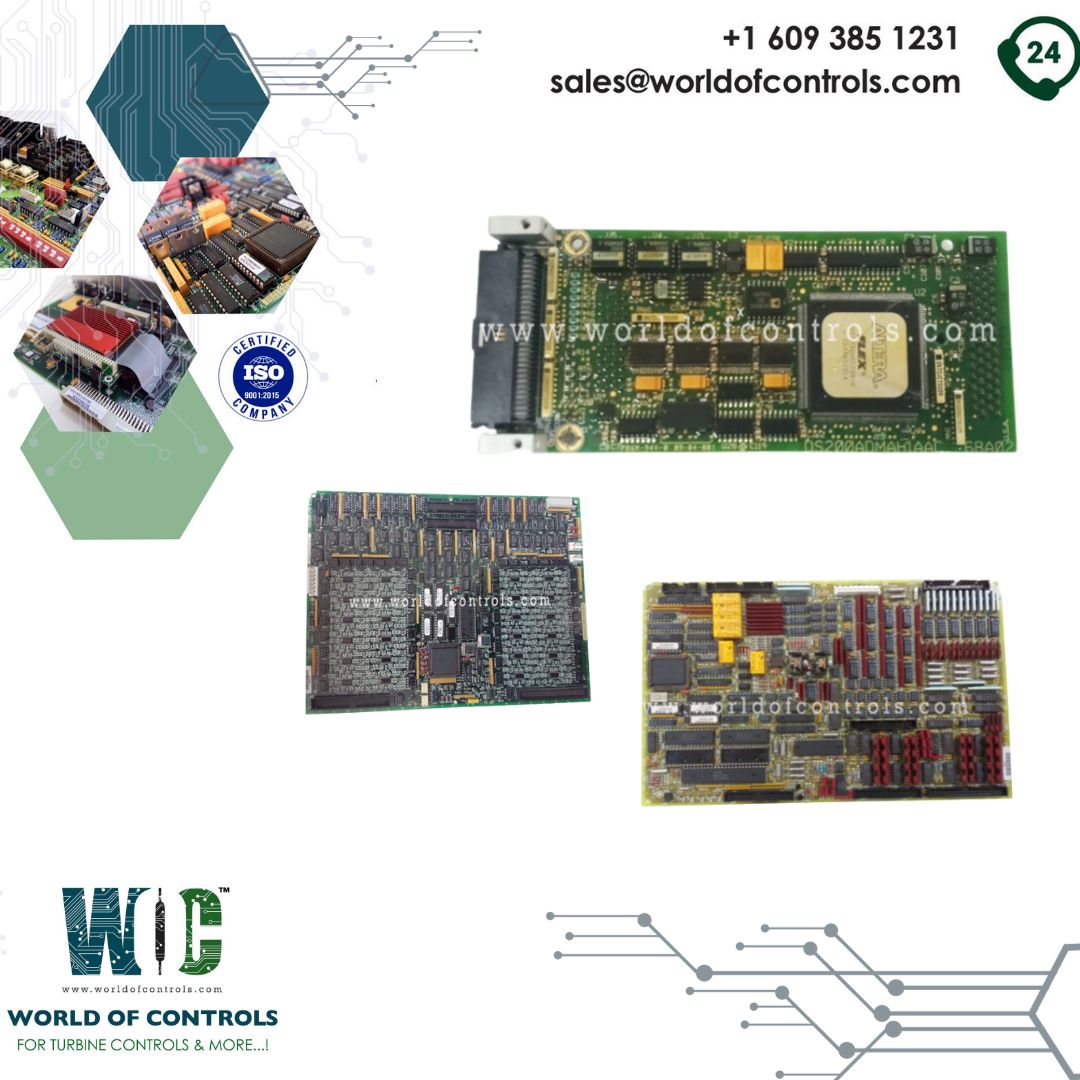GE Speedtronic Mark V I/O module Features
The Mark V I/O system is meticulously designed to seamlessly interface with various turbine and generator devices, including:
- Magnetic Speed Pickups: The Mark V I/O system is compatible with magnetic speed pickups commonly used for speed sensing in turbines and generators.
- Servos and LVDT/Rs (Linear Variable Differential Transformers/Resolvers): It provides direct compatibility with servos and LVDT/Rs, essential for precise position and displacement measurements.
- Vibration Sensors: Vibration sensors can be readily connected to the Mark V I/O, facilitating vibration monitoring and analysis.
- Thermocouples: Thermocouples, used for temperature measurement, can be seamlessly integrated into the Mark V I/O system.
- Resistive Temperature Devices (RTDs): The Mark V I/O accommodates RTDs, ensuring accurate temperature readings and control.
GE Speedtronic Mark V I/O module Contact Inputs
- GE Speedtronic Mark V I/O module utilizes the 125 V dc bus from its internal power distribution core to provide a fuse-isolated and current-limited interrogation voltage for contact inputs.
- While input voltages ranging from 24 V dc to 125 V dc are supported, voltages outside this range may require an external power source. Jumpers on the terminal boards allow for the isolation of field grounds by disconnecting the interrogation voltage from contact inputs in groups of eight.
- Each contact input is optically isolated and receives a time stamp within 1 ms of a status change. For sequence of events (SOE) logging, the Mark V printer can log each contact input status change along with the time stamp. Additionally, diagnostic circuitry continually tests the internal electronics of each contact input every 1 ms, triggering an alarm in case of circuitry failure.
Contact and Solenoid Outputs
- The Mark V exclusively employs plug-in type magnetic relays for contact outputs, eschewing solid-state outputs. All contacts adhere to the form C configuration, featuring three wires: one normally open, one normally closed contact, and a common center conductor.
- In a Triple Modular Redundant (TMR) system, the three controllers independently determine the contact output status, and the two-out-of-three voting process occurs at the relay driver.
- If a consensus is not reached among the three controllers, a diagnostic alarm is immediately annunciated, ensuring system integrity and reliability.
WOC is happy to assist you with any of your Mark V I/O module requirements. Please contact us by phone or email for pricing and availability on any parts and repairs.
Frequently Asked Questions
What types of transducers can be connected to the GE Speedtronic Mark V I/O module?
The Mark V analog inputs can accommodate various transducers, including vibration sensors and speed sensors. Additionally, they offer support for 4-20 mA and 0-1 mA inputs for different transducer types.
How is power supplied to the transducers connected to the analog inputs?
The Mark V provides isolated 21 V dc excitation power to the transducers directly from the system.
Can the analog inputs be configured for both voltage and current inputs?
Yes, some analog inputs can be configured for either voltage or current inputs by selecting the appropriate jumper settings.
What happens in case of a discrepancy between the inputs to the R, S, and T controllers?
If there is any inconsistency between the inputs to these controllers, it is flagged as an internal diagnostic fault. However, the control and protection system continues normal calculations based on the median signal.
